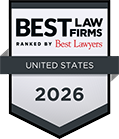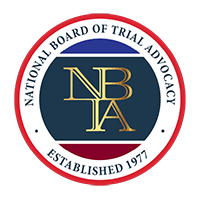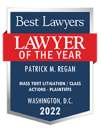Call Us Now
202-463-3030
Schedule a Free Consultation
If both drivers are found to share fault in a car accident, what happens next can differ based on where the accident occurred and the details of what led to the accident.
Resolving a car accident case where both parties are at fault may involve negotiations between the insurance companies, settlement discussions between the parties, or legal proceedings if an agreement cannot be reached.
Complete this form and our team will get back to you as soon as possible







Fault in a car accident is usually determined by investigating various factors surrounding the collision:
MILLION
Wrongful Death Settlement
MILLION
MILLION
Wrongful Death Verdict
MILLION
Premises Liability Settlement
MILLION
Wrongful Death Settlement
MILLION
Wrongful Death Verdict
MILLION
Medical Malpractice Settlement
MILLION
Personal Injury Settlement
MILLION
Car Accident Settlement
“At-fault” and “no-fault” laws refer to how responsibility and compensation are determined after a collision.
Maryland, and Virginia all follow an “at-fault” system for car accidents. This means the at-fault driver determined to have caused the accident is responsible for covering the damages compensating the injured party. This differs from a no-fault state, in which car accident victims file a claim with their insurance company, regardless of who was at fault for the car accident.
Car accident victims in Maryland and Virginia will file a personal injury case against the at-fault driver and the driver’s insurance company. Once the claim is filed, the injured party will work to prove the other driver’s negligence caused the car accident and subsequent injuries that led to significant losses.
Washington, DC, follows the “no-fault” law. This means that the injured person’s car insurance covers their medical expenses, no matter who caused the accident. Each driver files a claim with their own insurance company. When filing a claim, it’s a good idea to speak with a Washington, DC, car accident lawyer to ensure you don’t miss anything important.
DC, Maryland and Virginia offer optional PIP coverage, which can provide benefits regardless of who is at fault in an accident.
In Washington, DC, Maryland, and Virginia, the legal principles of contributory or comparative negligence may apply when both parties are found to be at fault in a car accident.
DC, Maryland, and Virginia uphold contributory negligence law, a particularly stringent legal principle. Under this law, if an injured person is found to be partially responsible for their injuries, even one percent, they are barred from recovering compensation for their injuries. If your negligence contributed to the accident, your claim will be denied. This is a strict standard and can be tough on the party initiating the lawsuit, as even a small degree of fault can result in a complete loss of the right to financial compensation.
Insurance companies often use this doctrine to deny claims, arguing that you were partially at fault for the accident and, therefore, not entitled to compensation. To combat this doctrine, you need skilled legal representation to negotiate with the insurance companies.
In cases where both parties are found to be at fault, the determination of fault and the application of these legal principles will depend on the specific circumstances of the accident, including factors such as witness testimonies, police reports, and any available evidence such as photographs or video footage.
It’s important to consult with a qualified car accident attorney familiar with the laws and regulations of the specific jurisdiction where the accident occurred to understand how these principles may apply to your situation.
Shared fault car accidents can occur in various ways, resulting from various factors. They happen when both drivers do things that contribute to the crash. Some of the most common examples include:
At Regan Zambri Long, our lawyers are known for their expertise in personal injury cases, including car accident-related ones.
Regan Zambri Long has a team of experienced attorneys who specialize in handling personal injury cases, including car accidents. Our knowledge and expertise can be invaluable in navigating the legal complexities of your case.
Our firm has a strong track record of obtaining favorable client outcomes. We have likely handled similar cases and know how to advocate for your rights and pursue maximum compensation effectively.
With the resources of a well-established law firm behind you, you can access the necessary resources to build a strong case. This may include conducting thorough investigations, hiring experts, and navigating negotiations or court proceedings.
Many law firms, including Regan Zambri Long, offer free initial consultations. This allows you to discuss your case with one of our attorneys, learn about your legal options, and determine if we are the right fit for you without any obligation.
If you’ve been injured in a car accident and believe you may be entitled to compensation, reaching out to Regan Zambri Long or a similar reputable law firm can help ensure that your rights are protected and that you receive the legal representation you deserve.
Have you or your loved one sustained injuries in Washington DC, Maryland or Virginia? Regan Zambri Long PLLC has the best lawyers in the country to analyze your case and answer the questions you may have.